With versatile large language models (LLMs) like GPT-3 and PaLM driving exponential AI progress recently, more organizations explore customizing models specifically for business needs. Though generic LLMs impress with broad capabilities, fine-tuning architecture and datasets for industry-specific tasks boosts accuracy and performance materially. According to a McKinsey survey, 63% of enterprises now build custom deep learning models across functions (McKinsey).
Targeting solutions overcome the “one-size-fits-all” limitations of mass market LLMs created for general usefulness. Focusing model training around niche data and specialized taxonomies elevates precision for the most relevant output quality KPIs. Forbes even suggests custom LLM investment returns could beat market averages over 5-10 years (Forbes).
Yet strategically developing custom LLMs relies on curating sufficient high-quality proprietary data alongside considerable cloud computing resources and machine learning engineering talent for optimal tuning. This introduction examines key considerations around custom LLM modeling for your organization vs configurable SaaS solutions or partner-led development. We analyze the upsides and downsides of custom LLMs given current maturity stages across model reliability, monitoring needs, and maintenance costs over time.
Let's dive in and find out if it's the right solution for your business.
Understanding the Need for Custom LLM Models
In this section, we will explore the limitations of standard LLM models and the benefits of customization to meet business needs. Custom LLM models offer a solution to the shortcomings of off-the-shelf models, allowing businesses to tailor their machine-learning systems to their specific requirements.
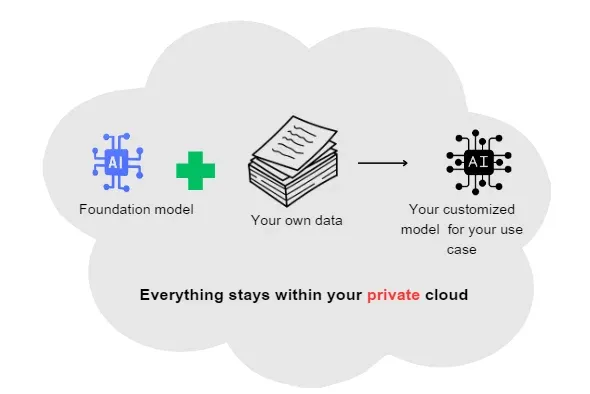
The Limitations of Standard LLM Models
Standard LLM models, while useful in certain contexts, often fall short when it comes to meeting the unique needs of businesses. These models are designed with a general understanding of language, but they may not fully comprehend the complexities and nuances of industry-specific terminology and jargon. Consequently, their performance may be suboptimal when applied to specialized fields or domains.
Standard LLM models also lack the flexibility to adapt to evolving business needs. As new trends, technologies, and market dynamics emerge, these models may struggle to keep up. Their fixed structure and inability to learn and improve over time can limit their effectiveness in addressing specific business challenges.
The Benefits of LLM Customization for Businesses
- Improved Performance: Customizing LLM models leads to higher accuracy and precision in language processing tasks, resulting in more efficient decision-making processes, improved customer interactions, and enhanced overall operational effectiveness.
- Adaptability: Customizable LLM models enable businesses to stay ahead of the curve by adapting to changing market dynamics, emerging trends, and evolving customer preferences.
- Enhanced Understanding: Developing customized LLM models allows businesses to enhance their understanding of industry-specific language and terminology, leading to more accurate and relevant insights.
- Efficient Decision-Making: By training the LLM model with industry-specific data and fine-tuning it based on specific business requirements, companies can achieve higher accuracy and precision, leading to more efficient decision-making processes.
- Competitive Advantage: Customizable LLM models empower organizations to maintain a competitive edge by quickly and effectively addressing new challenges and opportunities.
In summary, custom LLM models allow businesses to overcome the limitations of standard models and tailor their machine-learning systems to meet their specific needs. By understanding their industry's unique vocabulary and requirements, companies can gain a competitive advantage, improve performance, and stay agile in an ever-changing business landscape.
Suggested Reading:
Evaluating the Right Solution for Your Business
Many businesses are overwhelmed and unsure where to begin when implementing a custom LLM model. With so many options available, it can be challenging to determine which solution is best suited for your specific business needs.
By taking a thoughtful approach and considering the following factors, you can determine whether a custom LLM model will deliver the desired benefits for your organization.
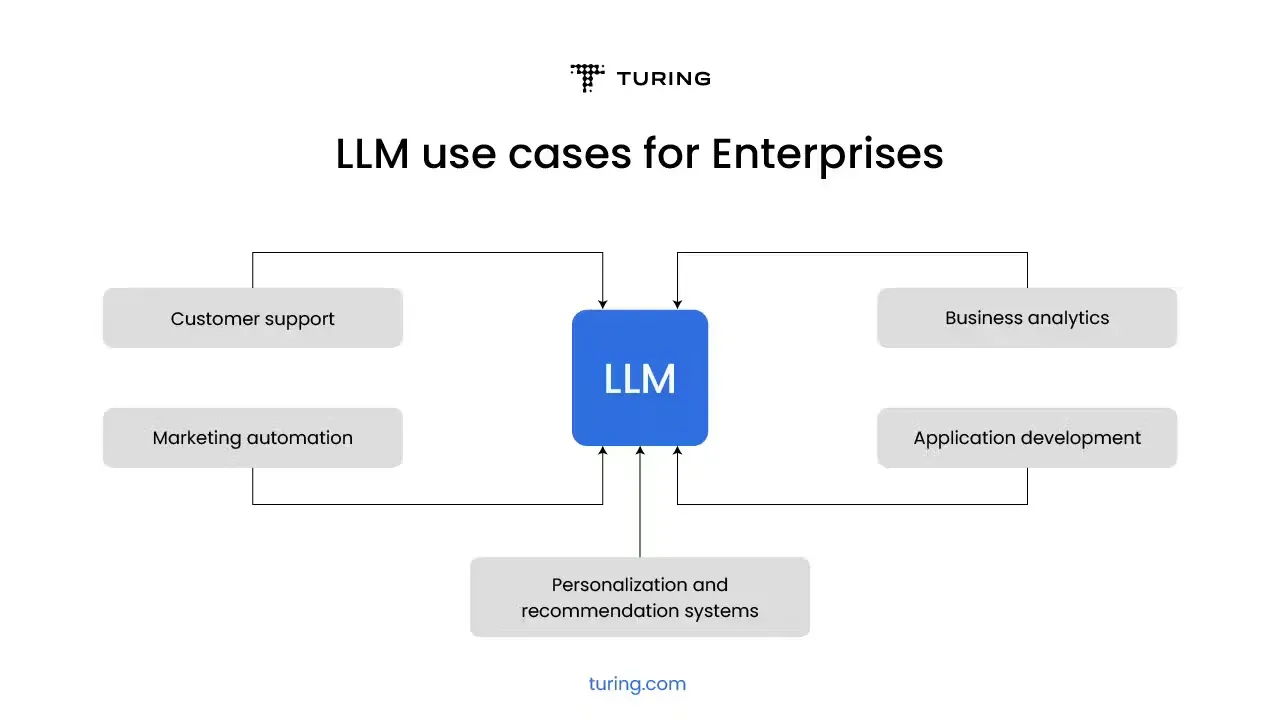
Assessing Your Business Requirements
Before investing in a custom LLM model, evaluating your business requirements and identifying what you hope to achieve with the solution is vital. Consider the specific use cases and tasks you want the LLM model to tackle.
Do you need the model to categorize large amounts of data or to automate certain processes? Are you looking to improve your customer service workflow or to generate more targeted marketing campaigns? Assessing your business requirements upfront will help you to determine which LLM model features are essential and which are nice-to-haves.
Considering the Custom LLM Model Option
Having analyzed your business requirements, you can now weigh up the custom LLM model option. Consider factors such as the cost of implementing a custom LLM model versus using an off-the-shelf model, the level of complexity involved, and the long-term maintenance costs.
Custom LLM models can be costly and time-consuming to develop. They require numerous skilled professionals, from Data Scientists to machine Learning Experts to Software Engineers to Data Engineers. Unless you have a pressing need or specific business problem, off-the-shelf LLM models may be the more cost-effective option.
Custom LLM models, however, can offer some benefits that off-the-shelf models cannot. Pre-defined constraints do not hinder custom LLM models and can be tailored to meet your specific business requirements. The model can be tweaked, optimized, and updated over time to improve its performance continuously. A custom LLM model can be a highly effective solution if your business has unique data requirements or specific workflow processes that need to be automated.
And, beginning with LLM development for your business need not be that tough. Meet BotPenguin, the home of AI-driven chatbot solutions
BotPenguin houses experienced developers with 5+ years of expertise who know their way around NLP and LLM bot development in different frameworks.
And that's not it! They can assist you in implementing some of the prominent language models like GPT 4, Google PaLM, and Claude into your chatbot to enhance its language understanding and generative capabilities, depending on your business needs.
- Hire ChatGPT Developers
- Custom ChatGPT Plugins
- Hire Chatbot Developers
- Custom Chatbot Development
- ChatGPT Clone
- ChatGPT Consultant
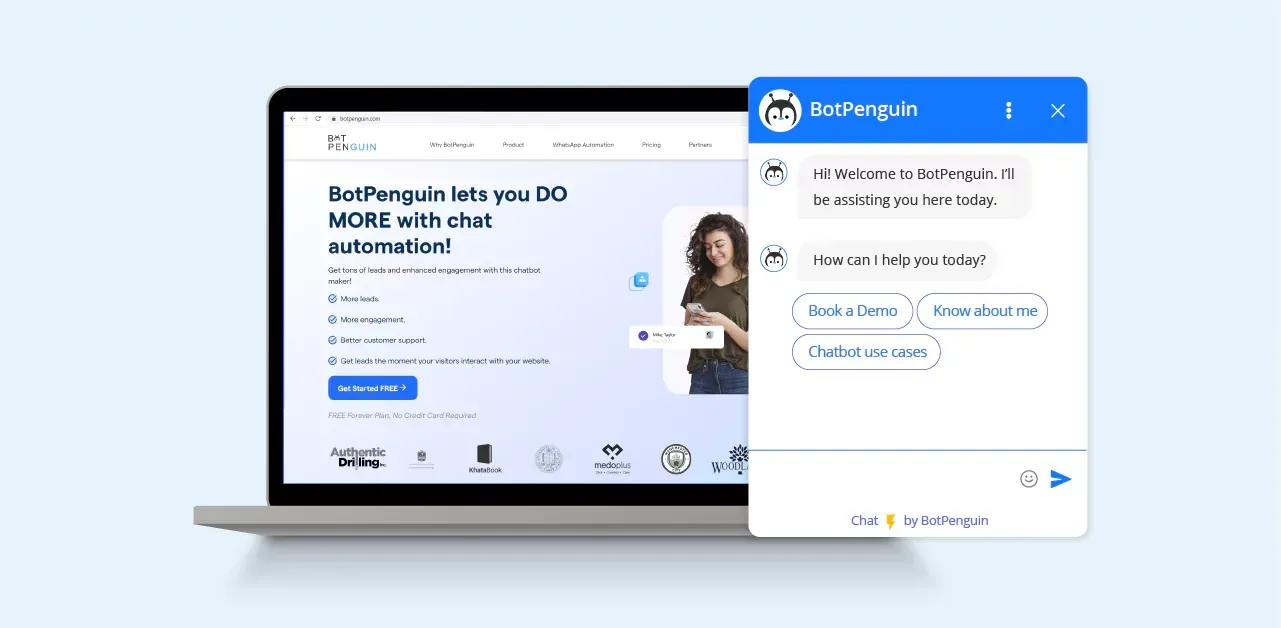
Comparing Off-the-Shelf vs Custom LLM Models
When evaluating whether a custom LLM model is the right solution for your business, it's essential to consider the various tradeoffs between off-the-shelf and custom solutions. Off-the-shelf models often offer broad capabilities that can be applied across various industries and use cases.
These models are often quicker to implement than custom solutions and may require fewer resources. However, off-the-shelf solutions do not always incorporate the specific needs of your business. In contrast, custom LLM models may require more time, budget, and resources to develop, but they can lead to better performance and more tailored results.
Developing a custom LLM (Large Language Model) can be a valuable investment for businesses leveraging artificial intelligence to meet their specific needs. This section will outline the steps involved in developing a custom LLM model, providing a clear roadmap for organizations considering this option.
Steps to Develop a Custom LLM Model
To successfully develop a custom LLM model, it is essential to follow a systematic approach encompassing requirements and specifications, engaging with LLM model developers, and prototyping, testing, and refining.
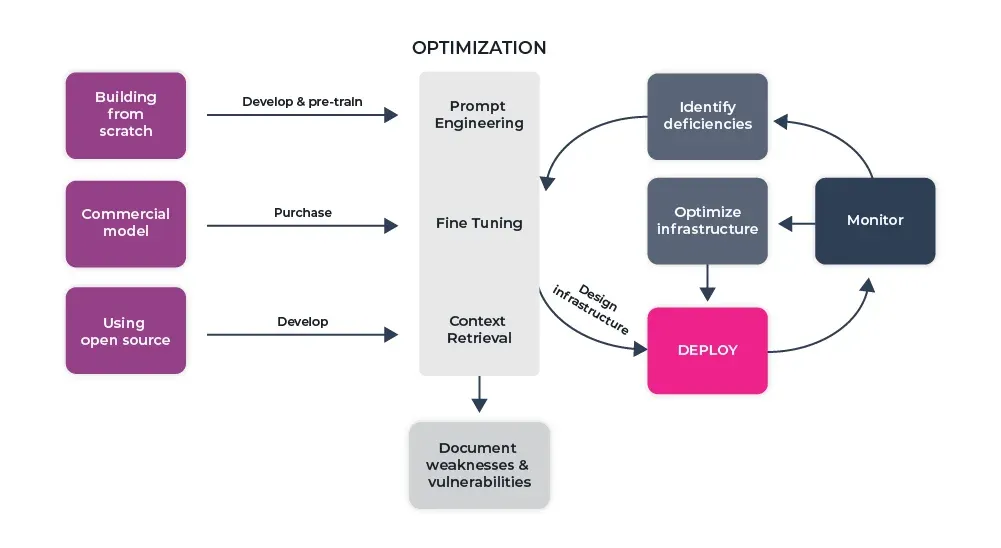
Defining Requirements and Specifications
The first step in developing a custom LLM model is to define your business requirements and specifications. Start by identifying the specific tasks or problems you want the LLM model to address. This involves thoroughly understanding the use cases, data requirements, and desired outcomes. Collaborate with key stakeholders, such as subject matter experts, data scientists, and decision-makers, to gather insights into the particular challenges the model should tackle.
Clearly articulate your expectations and goals for the LLM model. Define the desired performance metrics, such as accuracy, speed, and scalability. This will serve as a foundation for evaluating the success of the developed model.
Engaging with LLM Model Developers
Once your requirements and specifications are well-defined, the next step is to engage with LLM model developers with the necessary expertise. Look for reputable experts or teams experienced in developing custom LLM models. Consider their track record, domain knowledge, and technical capabilities.
When engaging with the developers, communicate your requirements clearly and concisely. Explain the problem statement, desired outcomes, and any constraints or challenges that need to be addressed. Collaborate with the developers throughout the process and ensure regular communication to track progress and address any potential issues.
Prototype, Test, and Refine
After the initial development phase, it is crucial to prototype, test, and refine the custom LLM model. Begin by building a prototype that incorporates the defined requirements and specifications. This prototype will serve as a starting point for further iterations and improvements.
Test the prototype rigorously using relevant datasets to evaluate its performance against the desired metrics. This testing phase helps identify any limitations, biases, or areas for improvement in the model. Collect feedback from users and stakeholders, incorporating their insights into refining the custom LLM model.
Iterate and refine the model based on the feedback received during testing, ensuring it aligns with the business objectives. This iterative process allows for continuous improvement and fine-tuning of the model's performance.
Suggested Reading:
Custom LLM Development: Build LLM for Your Business Use Case
Implementing and Integrating Custom LLM Models
Once a custom LLM (Large Language Model) is developed, deploying and integrating it into existing workflows can be challenging. This section will outline the key steps involved in implementing and integrating a custom LLM model to ensure a smooth deployment and integration process.
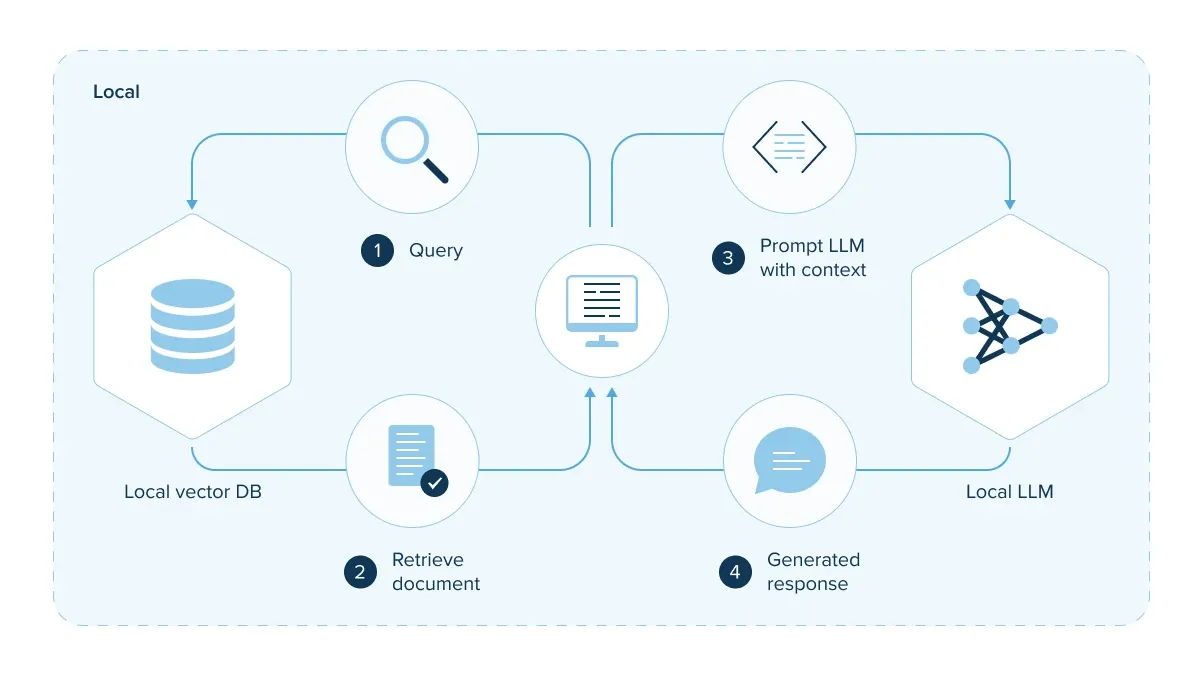
Ensuring Smooth Deployment and Integration
Before deploying the custom LLM model, it is essential to ensure that the infrastructure and systems are adequately prepared. Ensure that the required hardware, such as GPUs and high-performance computing systems, is in place to run the model efficiently. Conduct thorough testing to validate the model's performance and ensure compatibility with the existing infrastructure.
Integrating a custom LLM model into an existing workflow requires careful planning and coordination with the relevant departments and teams. Establish a clear plan for integrating the model into your existing workflows. Ensure the integration process aligns with your business goals and objectives, and consider if any new data sources are required or existing data sources need revision.
Onboarding and Training for Employees
After successful deployment and integration, the next step is onboarding and training employees to use the custom LLM model in their daily work. Provide training on the LLM model, including how to use it and how it fits into their work processes. The onboarding process helps employees understand why the tool was developed and how it can benefit them.
Provide feedback mechanisms and channels for employees to express their concerns or problems with the LLM model. Continuously monitor the feedback loop and provide necessary training and support to ensure successful adoption.
Monitoring and Measuring Performance
Monitoring and measuring the custom LLM model's performance post-deployment is critical. Establish a performance evaluation plan to track the model's performance metrics against the established goals, such as accuracy, precision, and recall. Monitor the model's performance to understand its effectiveness and whether it meets your business objectives.
Review the model's output regularly, ensuring it aligns with business goals and objectives. Conduct constant performance evaluations, including running automated tests to identify any changes in performance and resolve any performance issues.
Conclusion
As this guide outlines, investing in tailored large language models allows organizations to maximize AI capabilities for precise industry-specific use cases, from customer service to supply chain analytics. While leading options like GPT-3 and PaLM enable broad experimentation, long-term competitive differentiation and ROI rely on precision tuning.
With 63% of enterprises actively building custom deep learning models (McKinsey), the custom LLM approach is gaining adoption.
However, the total cost of ownership remains intensive, with acquiring niche training data, engineering, and testing cycles plus ongoing model supervision, update, and maintenance fees in production.
When it comes to implementing or consulting regarding custom LLM integration, you can count on BotPenguin. Our seasoned expert will guide you through LLM model selection, training, fine-tuning, and integration.
We can customize your favorite language model and create tailored solutions for whatever use case you aim to optimize using LLM.
So, contact us and share your ideas. Let’s build your custom LLM model to propel your business operations.
Suggested Reading:
Frequently Asked Questions (FAQs)
What advantages do Custom LLM Models offer to businesses?
Custom LLM Models provide tailored solutions, enhancing accuracy and relevance in language processing tasks. They adapt to specific industry needs, offering improved performance over generic models.
How can businesses determine if Custom LLM Models align with their needs?
Businesses should assess their language processing requirements, considering factors like industry specificity, task complexity, and desired levels of customization. Custom LLM Models are ideal when precision and domain expertise are paramount.
What are the key considerations before implementing Custom LLM Models?
Before implementation, businesses should evaluate data quality, computational resources, and the need for domain-specific expertise. Assessing these factors ensures a seamless integration and effective performance of Custom LLM Models.
How do Custom LLM Models compare to off-the-shelf language models?
Custom LLM Models surpass off-the-shelf models in accuracy and relevance due to tailored training on industry-specific data. They provide a competitive edge by aligning closely with business needs.
What industries benefit the most from Custom LLM Models?
Industries with specific language nuances, such as legal, healthcare, and finance, benefit significantly from Custom LLM Models. These models offer precision and relevance in tasks requiring domain expertise.
Can Custom LLM Models be fine-tuned for evolving business needs?
Yes, Custom LLM Models are adaptable and can be fine-tuned to evolving business requirements. This flexibility ensures continued relevance and performance optimization as business needs change over time.

